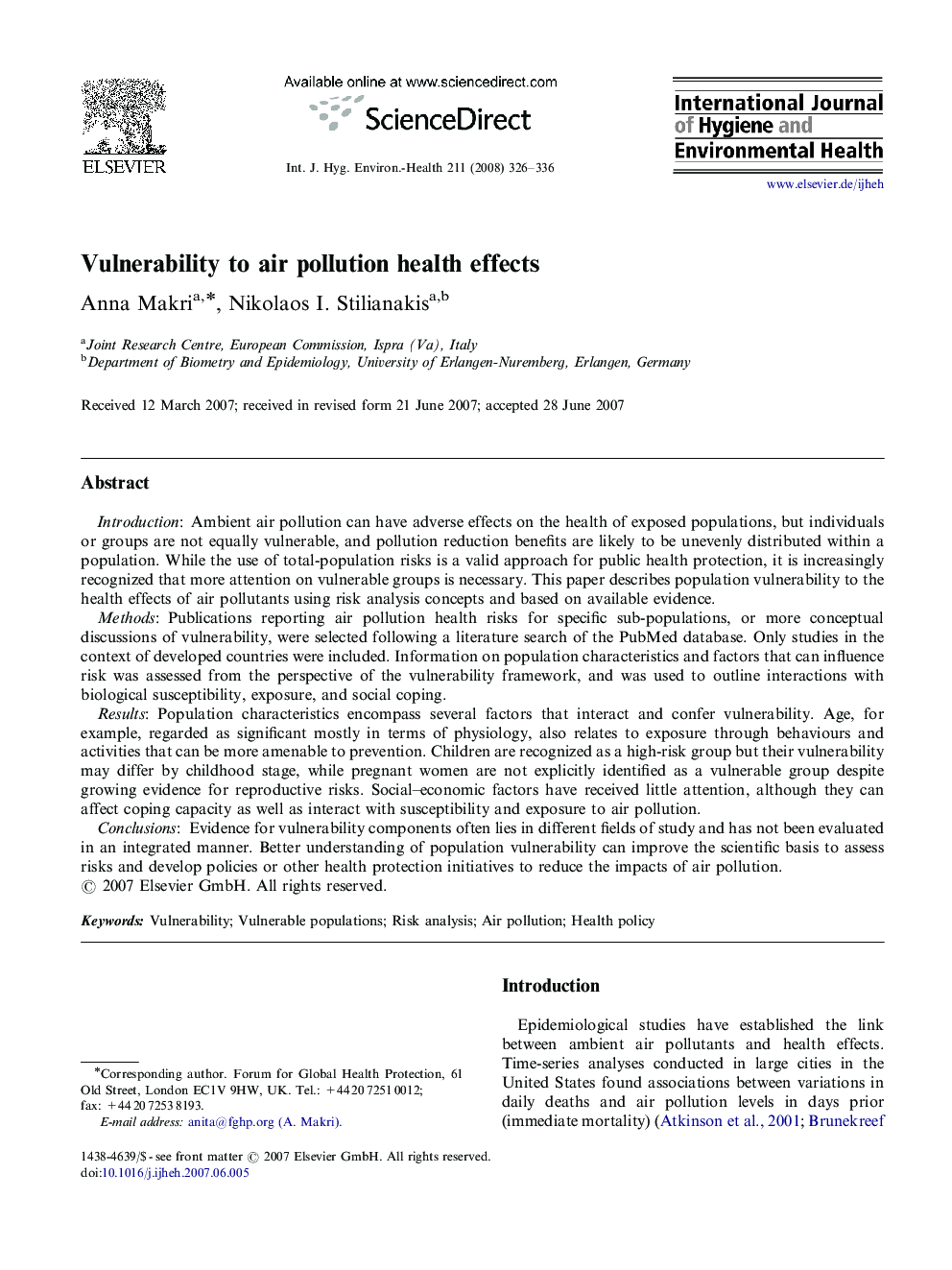| Article ID | Journal | Published Year | Pages | File Type |
|---|---|---|---|---|
| 2589254 | International Journal of Hygiene and Environmental Health | 2008 | 11 Pages |
IntroductionAmbient air pollution can have adverse effects on the health of exposed populations, but individuals or groups are not equally vulnerable, and pollution reduction benefits are likely to be unevenly distributed within a population. While the use of total-population risks is a valid approach for public health protection, it is increasingly recognized that more attention on vulnerable groups is necessary. This paper describes population vulnerability to the health effects of air pollutants using risk analysis concepts and based on available evidence.MethodsPublications reporting air pollution health risks for specific sub-populations, or more conceptual discussions of vulnerability, were selected following a literature search of the PubMed database. Only studies in the context of developed countries were included. Information on population characteristics and factors that can influence risk was assessed from the perspective of the vulnerability framework, and was used to outline interactions with biological susceptibility, exposure, and social coping.ResultsPopulation characteristics encompass several factors that interact and confer vulnerability. Age, for example, regarded as significant mostly in terms of physiology, also relates to exposure through behaviours and activities that can be more amenable to prevention. Children are recognized as a high-risk group but their vulnerability may differ by childhood stage, while pregnant women are not explicitly identified as a vulnerable group despite growing evidence for reproductive risks. Social–economic factors have received little attention, although they can affect coping capacity as well as interact with susceptibility and exposure to air pollution.ConclusionsEvidence for vulnerability components often lies in different fields of study and has not been evaluated in an integrated manner. Better understanding of population vulnerability can improve the scientific basis to assess risks and develop policies or other health protection initiatives to reduce the impacts of air pollution.
